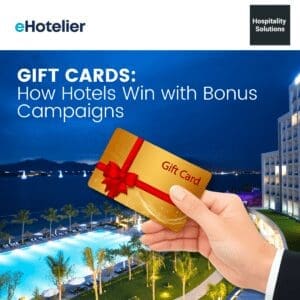 Or at the very least, it should be. Based on my more than 12 years of experience in the hospitality industry, the press release is the least effective public relations tool, and one that all marketers should be eliminating immediately from their media relations toolbox.
Or at the very least, it should be. Based on my more than 12 years of experience in the hospitality industry, the press release is the least effective public relations tool, and one that all marketers should be eliminating immediately from their media relations toolbox.
I know that you’re probably reading this with your mouth hanging open in shock: ÒA PR person is telling us that the press release doesn’t workÉ what?!Ó
Unfortunately, it’s true. The top journalists receive hundreds, if not thousands, of press releases by email every day, many of which don’t offer any newsworthy information. Given that, how many of those hundreds of press releases are actually read by journalists from start to finish? I can personally attest that I, on average, read only one press release, or sometimes none, from start to finish out of the 1000+ that I receive on a weekly basis.
In an over-saturated, highly competitive media market like the hospitality industry, it takes a lot more than a press release to catch the eye of the top journalists. So, if the press release is no longer an effective tool, what is a more effective way to communicate your news and stories with media?
The best way to make sure that your news stands out from the crowds in a journalist’s inbox is to provide good info, a credible source and a strong, timely, newsworthy angle, repackaged into an email pitch. Using an email pitch, you are more quickly and easily able to present journalists with the entire story idea, rather than following the restrictive press release format, which just outlines the actual announcement info. This eliminates the need for journalists to read between the lines of your press release to find a story angle that would be newsworthy for their readers. Journalists will always prefer marketers who make their jobs easier so you should always work toward accomplishing that end in every interaction.
In addition, an email pitch offering the full story outline will improve the ROI on your PR outreach because you are more effective at controlling the narrative of the article that the journalist writes, ensuring that more of your key messages are communicated in the resulting article.
In terms of format, there is no right or wrong way to send a story pitch, but in general, keep it as short and to-the-point as possible. I personally prefer an informal email, just a few paragraphs outlining the story concept and the source that you’re offering to comment on the story. Explain why this story will be newsworthy for the journalist’s audience because, often, the connection may not be immediately apparent.
Let’s look at an example of how you can create an email pitch to communicate all of the important story info to media. Imagine that your company has just launched a sophisticated machine learning revenue management system (RMS) Ð the first of its kind. Rather than just sending out a press release announcing the launch of your new RMS, send media an email pitch that illustrates the more widespread impact of the launch. Here’s an example of an effective media pitch letter:
ÒMost consumers choose accommodation based primarily on price. As such, it is important that hotels price their rooms according to the room rates of all of the available lodging options within a destination. With the growth of the sharing economy and alternative accommodation providers, like Airbnb and HomeAway, that has proven impossible, without manually searching for rates whenever a pricing update was required.
“But that is no longer the case. Our company’s new RMS makes it easy for properties to determine the best possible room rate, based on the current prices of both direct and indirect competitors within the destination. Using our RMS, hotels will experience significant boosts in occupancy, ADR and RevPAR Ð all of the key metrics necessary for a hotel to be financially successful, no matter how the market changes.Ò
Do you see how much more interesting the news sounds when you explain it fully, focusing on the impact that the solution will have on individual hotels and the market as a whole? So, let’s all agree to put aside the boring, corporate press release and embrace the email pitch. Trust me, your media contacts will thank you for it!
Want to learn more about how to make your PR efforts more effective? Check out my recent article ÒHow to boost the ROI of your PR outreachÓ or download the free JLNPR guide ÒHow to use PR to boost sales Ð Without blowing your budget.Ó
By Jennifer Nagy, President of JLNPR Inc.
About JLNPR Inc.
 JLNPR Inc. is a full-service public relations and marketing agency that lives and breathes all facets of the travel technology industry. From online travel agencies to revenue management systems, tablet-based aviation automation solutions to IFE technology, hotels to airlines and everything in between, JLNPR uses our knowledge and experience to get your B2B travel technology company noticed by media, influencers and potential customers Ð and whenever possible, without the overused, often abused press release. In addition to traditional media relations outreach, we also ghost-write exciting, informational copy that will be published (in our client’s name) by top hotel industry media outlets Ð in order to increase your company’s visibility with potential customers, boost brand awareness and increase sales. To learn how to do your own PR for your company, download JLNPR’s free guide: How to Use Public Relations to Boost Your Sales – Without Blowing Your Budget. To find out more about JLNPR (including our services and out-of-the-box philosophy on press releases), please visit www.jlnpr.com.
JLNPR Inc. is a full-service public relations and marketing agency that lives and breathes all facets of the travel technology industry. From online travel agencies to revenue management systems, tablet-based aviation automation solutions to IFE technology, hotels to airlines and everything in between, JLNPR uses our knowledge and experience to get your B2B travel technology company noticed by media, influencers and potential customers Ð and whenever possible, without the overused, often abused press release. In addition to traditional media relations outreach, we also ghost-write exciting, informational copy that will be published (in our client’s name) by top hotel industry media outlets Ð in order to increase your company’s visibility with potential customers, boost brand awareness and increase sales. To learn how to do your own PR for your company, download JLNPR’s free guide: How to Use Public Relations to Boost Your Sales – Without Blowing Your Budget. To find out more about JLNPR (including our services and out-of-the-box philosophy on press releases), please visit www.jlnpr.com.















